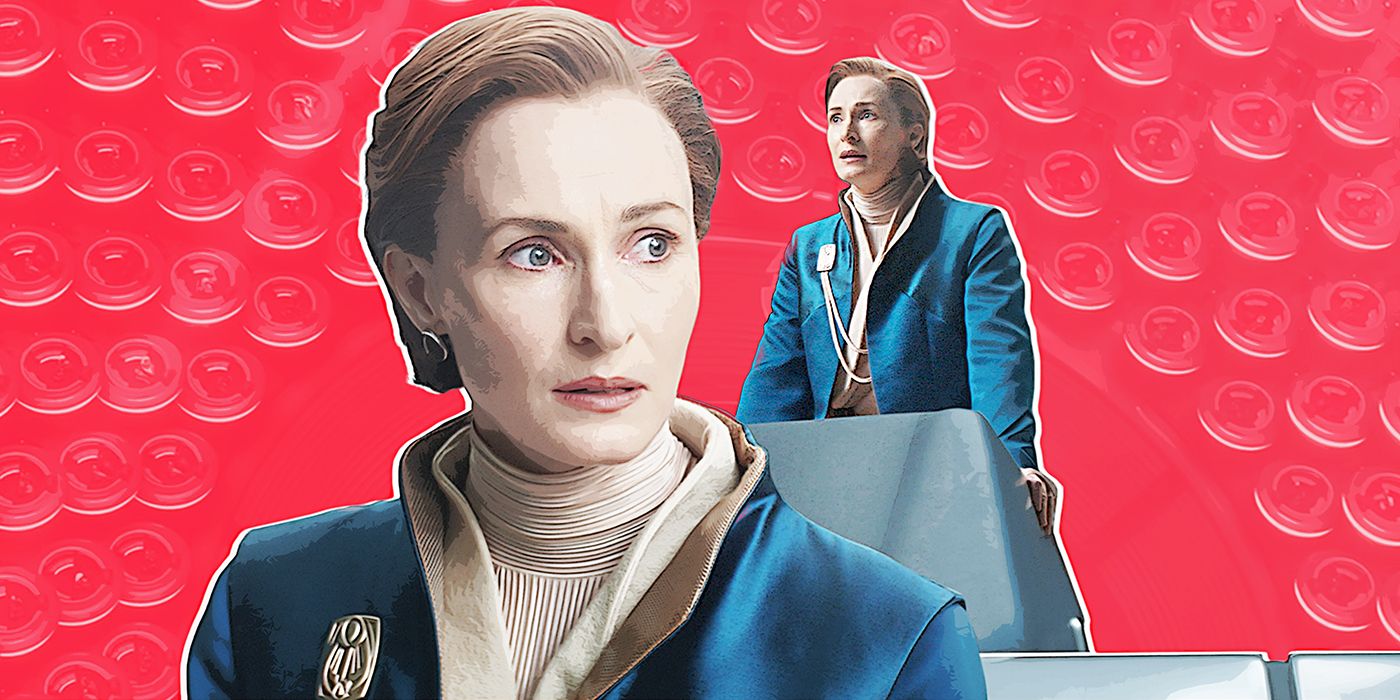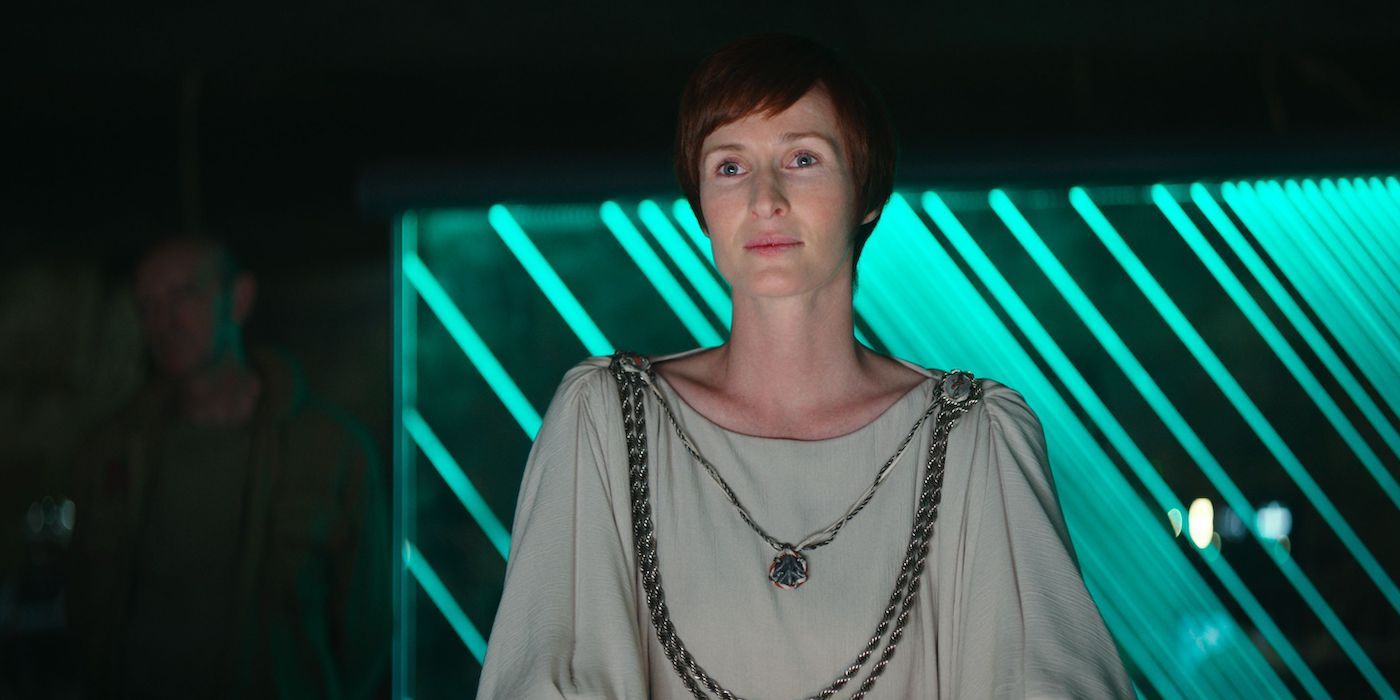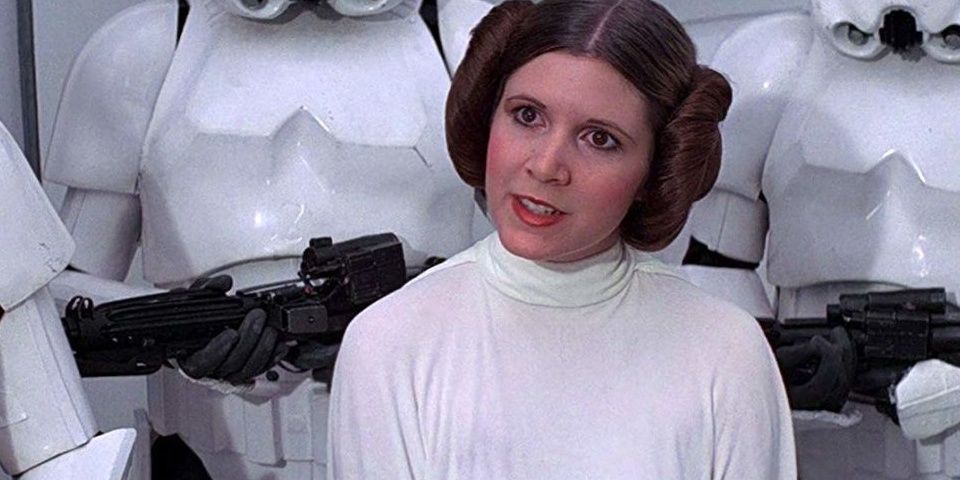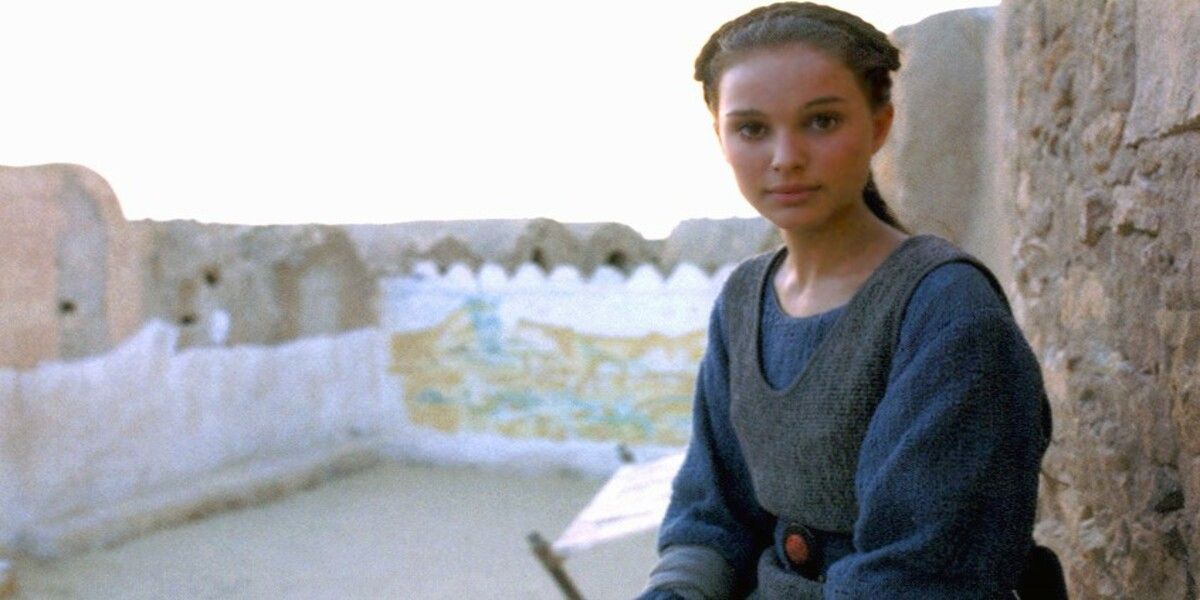With Andor now streaming on Disney+, we are promised a look at the origins of Diego Luna's fledgling Rebel Cassian Andor. All the while, forces are beginning to quietly prepare for a concerted effort to fight back against the Galactic Empire. Alongside our journey with the titular protagonist, we are also being reintroduced to a familiar face — Mon Mothma, once again played by Genevieve O'Reilly following portrayals in Star Wars Episode IlI: Revenge of the Sith, Rogue One: A Star Wars Story, and Star Wars Rebels. Her presence and importance in this pre-Original Trilogy series serves to reemphasize the role that women have played across Star Wars canon; more importantly, the prevalence of strong female will and the pivotal role it has played in some of the universe's key moments.
Mon Mothma's first appearance in 1983's Star Wars Episode VI: Return of the Jedi saw her played by Catherine Blakiston. While she had only one scene to establish herself, her briefing of assembled Rebel forces about the building of the second Death Star and the lives lost to bring the information to light communicates just how serious the Empire remained in wanting to flex its might. "Many Bothans died to bring us this information" still reigns as one of the most quoted lines in all of Star Wars. Fast-forward 22 years to O'Reilly's portrayal in Sith, where several key deleted scenes included on the film's DVD release helped to establish Mothma as a key architect in the formation of the Rebellion, alongside Jimmy Smits' Bail Organa.
The character would be further fleshed out in several episodes of the Cartoon Network original series Star Wars: The Clone Wars and Star Wars Rebels, where a speech she gave from the bridge of the Ghost (the ship piloted by the series' main characters) served as the official public acknowledgment of the Rebellion. In off-camera canon materials, she served as a political mentor to Leia Organa before she took over her father's Galactic Senate seat, and would later become Chancellor of the New Republic following the Battle of Endor.
Our Plucky Princess Turned General
Speaking of Leia, the plucky Princess of Alderaan was the very first fearless Star Wars female character we saw onscreen, debuting in 1977's Star Wars Episode IV: A New Hope. Played with wit, charm, and attitude by the late Carrie Fisher, Leia proved more than once that she was the engine of hope that moved the major plot points of the original trilogy forward. Not only did she refuse to give up information to the intimidating Darth Vader (well before she knew he was her fallen-from-grace father), she got Luke, Han, and the rest through the garbage chute and off the Death Star. Again and again, her fearlessness and initiative proved invaluable to the oft-on-the-ropes Rebellion—she engineered the escape from Hoth and first showed Force sensitivity in The Empire Strikes Back, then helped lead a mission to rescue her lover Han Solo (killing a tyrannical slug while wearing a metal bikini in the process) and was crucial in the ground fighting of the Battle of Endor in Return of the Jedi.
She'd train as a Jedi Knight herself after learning of her connection to the Skywalker lineage, though she ceased her training once she learned she was pregnant with son Ben (played by Adam Driver in the sequel trilogy). Following her son's fall to the Dark Side, she would become General Organa and lead The Resistance, an evolution of the Rebellion, to strike back against The First Order, formed from the remnants of the Galactic Empire. After the loss of Han and a brush with death, she trained the Force-sensitive Rey (Daisy Ridley), before dying during an attempt to reach her son with the last of her Force abilities.
The Spark of Rebellion
Of course, there would be no Leia without her mother, Padme Amidala, played in the prequel trilogy by Oscar-winner Natalie Portman and in animated media by Catherine Taber. First the Queen of Naboo, Amidala was a steadfast ruler who refused to give into corruption by the Neimodian Empire in Star Wars Episode I: The Phantom Menace. As ornately adorned as her daughter was utilitarian, Amidala showed grace under fire in helping lead a revolt against forces attempting to conquer her world, and was an ace with a blaster. Abdicating her throne to become a Senator, she would lead with a cool head, all the while realizing the descent of the Senate and its leader Chancellor Palpatine into chaos. In love with Jedi Anakin Skywalker, the two would marry in secret, with Amidala becoming pregnant with twins shortly thereafter. Alongside Mon Mothma and Bail Organa, Amidala helped give spark to the idea that became the Rebellion. After being presented with evidence of Anakin's fall into darkness, she traveled to the planet Mustafar to confront him. There, he Force-choked her, believing her to be a traitor after seeing stowaway Obi-Wan Kenobi (Ewan McGregor) emerge from her ship. After Kenobi mortally wounded Anakin, he took her to the planet Polis Massa, where she died giving birth to twins Luke and Leia. Initially criticized for not being given much of an arc in the prequel trilogy, subsequent media have portrayed her as an excellent diplomat and heavily capable fighter in her own right.
There are so many other moments throughout Star Wars and its stories that feature the supreme badassery of female characters — Ahsoka Tano's (Ashley Eckstein) fight with Darth Vader in the Season 2 finale of Rebels; Vice Admiral Amilyn Holdo (Laura Dern) sacrificing herself and saving The Resistance by sending a freighter into hyperspace on a collision course with an Imperial vessel in Star Wars Episode VIII: The Last Jedi; Jyn Erso (Felicity Jones) and crew giving their lives to transmit the Death Star schematics to the Rebellion in Rogue One. Hera Syndulla (Vanessa Marshall), Sabine Wren (Tiya Sircar), Bo Katan (Katee Sackhoff), Fennec Shand (Ming-Na Wen), Qi'Ra (Emilia Clarke) — all these characters and more show the unquestionable importance and prevalence of women and their power in the Star Wars universe.
Andor is yet another great opportunity to more fully flesh out an already-established female character and show just how consequential her arc is to goodness prevailing throughout the galaxy.




